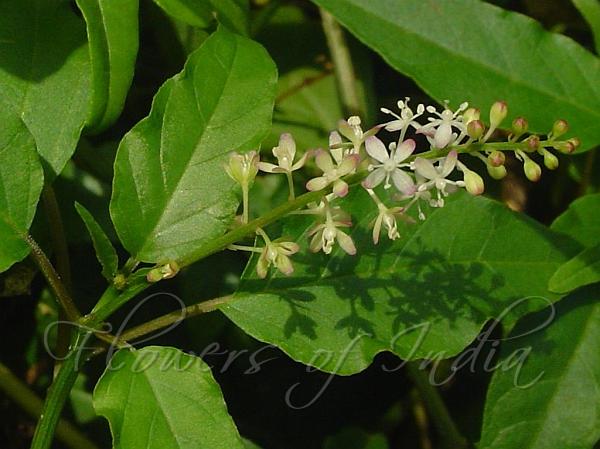|
| Pigeon Berry |
|

|

| File size | 133914 |
| Original date | 5/3/08 10:37 AM |
| Resolution | 2048 x 1360 |
| Flash | Flash did not fire |
| Focal length | 6.3mm |
| Exposure time | 1/250s |
| Aperture | 5.6 |
| Focus Distance | |
| Metering Mode | Spot |
| Camera make | SONY |
| Camera model | DSC-P52 |
| Sensor type |
|
|
|
|
Photo: |
Botanical name: Rivina humilis Family: Phytolaccaceae (Pokeweed family)
Synonyms: Rivina laevis, Rivina glabrata, Rivina bengalensis
Synonyms: Rivina laevis, Rivina glabrata, Rivina bengalensis
Pigeon Berry is a small, upright or straggling perennial herb,
The rouge plant is variable; the leaves may be
smooth to velvety. It grows 40-100 cm tall, rarely taller. The plant does
best in shady locations and blooms most of the year. The tiny pale
pink-white flowers give rise to brilliant orange or red berries. It is unique in that it is covered with small white and pink flowers, green and red berries, and red and green foliage at the same time.
Although the berries are considered toxic to humans, birds find them
irresistible. The plant is recommended to attract birds to the garden.
Pigeon Berry is grown as a houseplant. Juice made from
the berries has been used as a dye for fabrics and cosmetics, and as an
ink. The berries contain a pigment known as rivianin or rivinianin, very
similar to betanin, the pigment found in beetroot (Beta vulgaris). The
fruit and pods are used for colouring fabrics in Cape Verde. Pigeon Berry is
native to the Americas. The plant is now pantropical and often considered
a weed outside the Americas.
Medicinal uses: In Mexico,
the leaves were employed to treat wounds. The plant has been used as a
folk medicine to treat colds, diarrhoea, difficult urination,
flatulence, gonorrhoea, jaundice and ovarian pain.
In Mexico,
the leaves were employed to treat wounds. The plant has been used as a
folk medicine to treat colds, diarrhoea, difficult urination,
flatulence, gonorrhoea, jaundice and ovarian pain.
Medicinal uses:
 In Mexico,
the leaves were employed to treat wounds. The plant has been used as a
folk medicine to treat colds, diarrhoea, difficult urination,
flatulence, gonorrhoea, jaundice and ovarian pain.
In Mexico,
the leaves were employed to treat wounds. The plant has been used as a
folk medicine to treat colds, diarrhoea, difficult urination,
flatulence, gonorrhoea, jaundice and ovarian pain. | Identification credit: Akramul Hoque, Dinesh Valke | Photographed in cultivation in Mumbai & Imphal. |
• Is this flower misidentified? If yes,